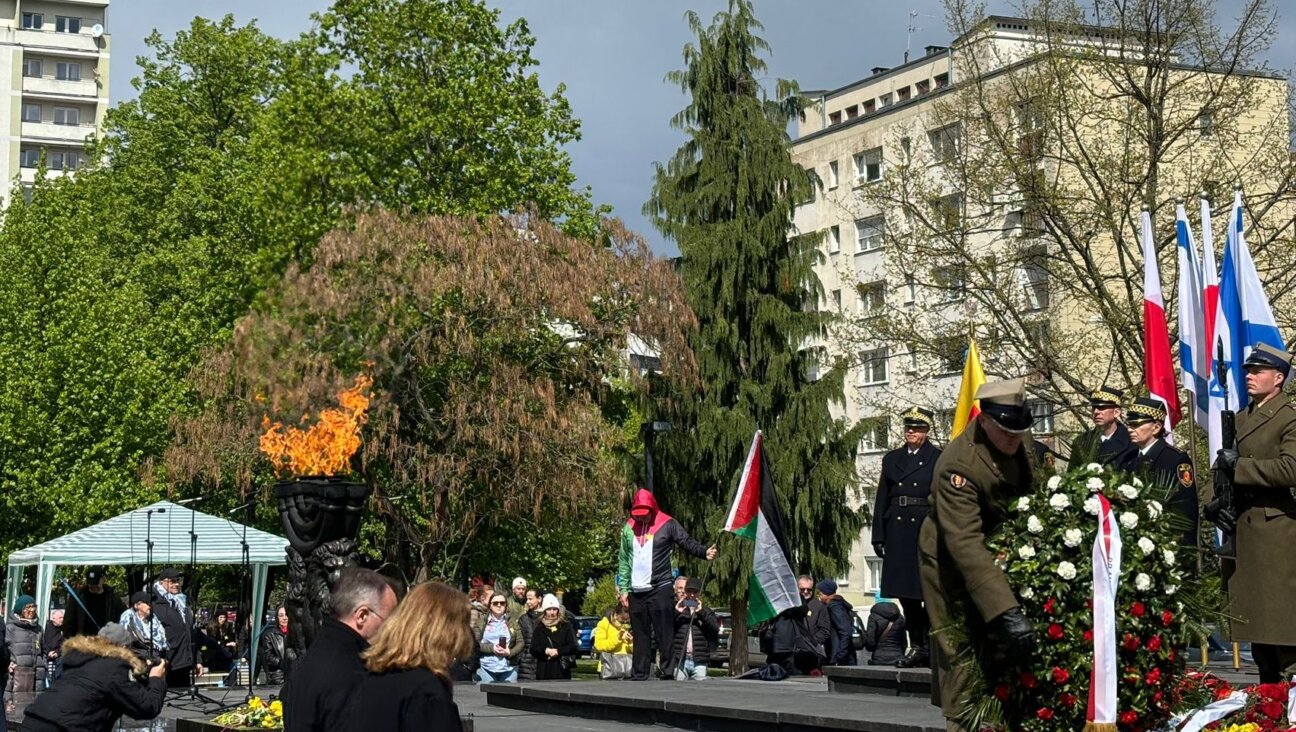Jews Warn Against Rush to Judgment on Boston Marathon Terror Bombings

Image by getty images
Jewish groups and officials who track terrorism warned against jumping to conclusions about who might be behind the bombings at the Boston Marathon, a caution that derives from years of wrongful speculation that on occasion has ruined innocent lives.
“We know that unfortunately 30 percent of terrorist attacks had Jewish institutions as secondary targets,” said Paul Goldenberg, the director of the Secure Community Network, the security arm of the national Jewish community, on Monday. “However, I must stress that there is absolutely nothing here that indicates any connection to an attack on the Jewish community. But based on history, we are standing vigilant for at least the next 48 hours.”
Over the last year, evidence has emerged that Hezbollah and others acting on behalf of Iran have stepped up plans to attack Jewish and Israeli targets, partially in response to increased pressure on Iran over its suspected nuclear weapons program. There has also been evidence since Obama’s 2008 election of intensified domestic violence by anti-government and white supremacist groups.
The Anti-Defamation League in an April 8 security bulletin noted that the week of April 20 – Hitler’s birthday – is a period of heightened alert due to the history of right-wing violence that coincides with it. The violence includes the 1993 storming of the Branch Davidian complex in Waco, Texas, and the Oklahoma City bombing, both on April 19.
“As a consequence of these anniversaries and the symbolism and significance of these dates, anti-government extremist groups, such as militia groups, may target April 19,” the ADL said. “Neo-Nazi and white supremacist groups have a history of staging events on or close to April 20.”
The low-tech nature of the device used in Boston – a “pressure cooker” that relays shrapnel upon explosion – suggests that the attacker was not part of a sophisticated network, said David Schanzer, a terrorism expert at Duke University.
“The only thing we do know is the amount of damage and destruction and power these bombs have,” Schanzer said. “It was a successful bomb but it didn’t bring the buildings down. That tells you something about the bomber and the types of materials used. If a group was determined and capable of planting a bomb in this particular spot, it would want to use the most sophisticated bomb they were capable of creating.”
Schanzer was careful to qualify even that insight, saying there were some scenarios in which a sophisticated group might consider using a crude device. Such caution derives from multiple speculations over the years that ultimately have embarrassed their purveyors and in some cases had dire consequences.
Some experts at first blamed the bombing of the Oklahoma City federal building on Muslim extremists, but anti-government extremists were found to be the culprits. Law enforcement authorities leaked the name of Richard Jewell, a private security guard, as a person of interest following the 1996 bombing attack at the Atlanta Olympics. Though Jewell ultimately was vindicated, he spent the rest of his life trying to regain a semblance of normalcy. Jewell died in 2007 at 44.
Matthew Levitt, a former FBI analyst who now directs the Washington Institute for Near East Policy’s counterterrorism project, said he expected more information would soon become available. Agents were scouring the bombing area for DNA and reviewing the wealth of video likely collected by hundreds of marathon watchers.
“When something does go boom, there’s no one better than the FBI at this,” Levitt said. “There’s a tremendous number of people working on this all over the world.”

I hope you appreciated this article. Before you go, I’d like to ask you to please support the Forward’s award-winning journalism this Passover.
In this age of misinformation, our work is needed like never before. We report on the news that matters most to American Jews, driven by truth, not ideology.
At a time when newsrooms are closing or cutting back, the Forward has removed its paywall. That means for the first time in our 126-year history, Forward journalism is free to everyone, everywhere. With an ongoing war, rising antisemitism, and a flood of disinformation that may affect the upcoming election, we believe that free and open access to Jewish journalism is imperative.
Readers like you make it all possible. Right now, we’re in the middle of our Passover Pledge Drive and we still need 300 people to step up and make a gift to sustain our trustworthy, independent journalism.
Make a gift of any size and become a Forward member today. You’ll support our mission to tell the American Jewish story fully and fairly.
— Rachel Fishman Feddersen, Publisher and CEO
Join our mission to tell the Jewish story fully and fairly.
Only 300 more gifts needed by April 30
























